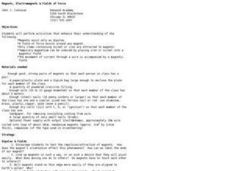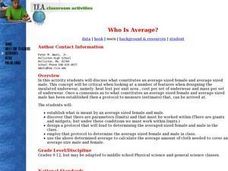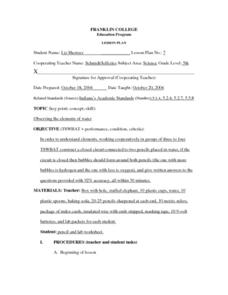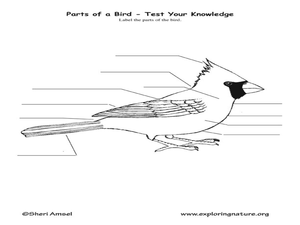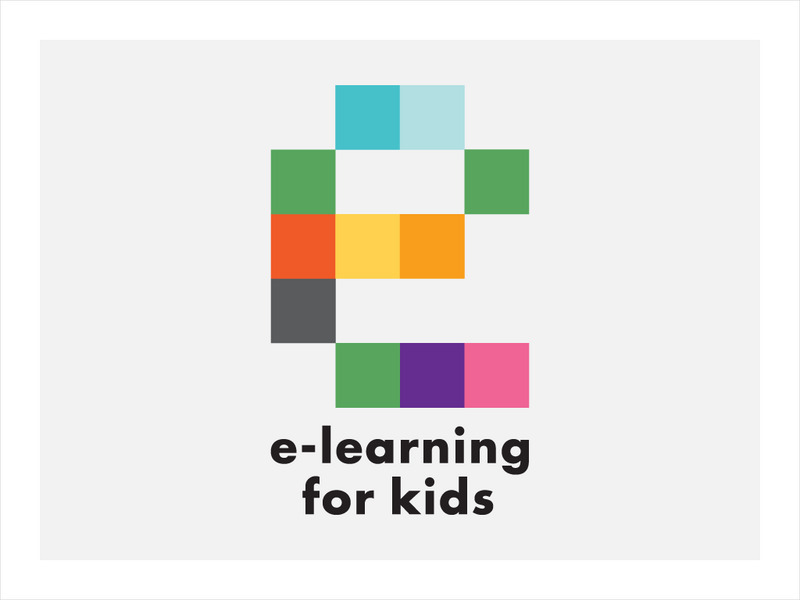Curated OER
Outdoor Survival
Students are introduced to basic outdoor survival concepts. They identify the seven basic needs for survival. Students describe the symptoms and treatment for frostbite and hypothermia. They compare and contrast the value of different...
Curated OER
Metalloids
Students discuss metalloids, their use as semiconductors, and their impact on the computer industry. They work in groups to create a visual timeline showing the evolution of the computer.
Curated OER
Capacitors
Students explain the concepts of charge storage and how a capacitor works. They construct a capacitor and measure the stored charge using the appropriate equipment and measurements. They also demonstrate capacitance and how it can be...
Curated OER
Heat: The Transfer of Thermal Energy
In this heat worksheet, students complete experiments with heat and answer short answer questions about the transfer of thermal energy. Students complete 4 questions, one chart, and one bar graph.
Curated OER
Magnets, Electromagnets and Field of Forces
Students investigate magnetic forces. In this electromagnetic lesson, students explore magnetic forces, magnetic fields, and the movement of current through a variety of activities.
Curated OER
Characteristics of Crystals
In this crystals worksheet, students complete a graphic organizer by filling in the characteristics of the different crystal types including melting/boiling point and electrical conductivity.
Curated OER
Science Test B-Grade 4
For this grade 4 science test worksheet, 4th graders complete a 30 question multiple choice quiz covering a variety of grade 4 concepts.
Curated OER
Altering Climate in the Classroom
Pupils experiment with moderating temperature extremes in the classroom. They experiment with ways to vent and block air.
Curated OER
Using Transistors: Let's Get Transistorized!
Students build two circuits and explore how transistors function. This activity allow them to observe the operation of a transistor as an amplifier.
Curated OER
School Building Survey
Students research information in their school. In this school building lesson students answer questions about their school to see how it was made, how it operates and what the energy costs are.
Curated OER
Who Is Average?
Young scholars investigate the average sizes for males and females. They discuss averages in relation to the amount of material needed to make underwear. In teams, they create a data table of small, medium, and large sizes and calculate...
Curated OER
Observing the Elements of Water
Fifth graders conduct a closed circuit experiment to observe the elements of water. They discuss the elements of Hydrogen and Oxygen, and in small groups construct a closed circuit connected to two pencils placed in water. Students...
Curated OER
Birds of Wisconsin
First graders explore the job done by ornithologists. They role play identifying the characteristics that make a bird a bird. They discuss what makes each bird species unique. Students are introduced to Wisconsin's most common and rare...
Curated OER
Learning Bird Traits
Students draw and label a bird. In this bird traits lesson, students learn what traits make a bird different from other animals. Students are taught how to draw a bird and are expected to label the various body parts they drew.
Science Buddies
Science Buddies: Which Is the Better Insulation Material?
You've probably noticed that the price of gasoline can fluctuate a great deal from one year to the next. Using good insulation material is one way to conserve energy and save money. Learn here which insulation materials work better than...
Science4Fun
Science4 Fun: Conductors and Insulators
Discover what materials make good conductors and insulators.
E-learning for Kids
E Learning for Kids: Science Underwater City: What Are Good and Poor Conductors of Heat?
John and Jessi are going underwater, and they need to stay warm. Help them learn about conductors of heat so they can stay warm.
TeachEngineering
Teach Engineering: Will It Conduct?
Students build their own simple conductivity tester and explore whether given solid materials and solutions are good conductors of electricity.






